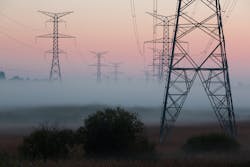The U.S. energy storage industry just completed another record-setting year — doubling deployments to 336 MWh in more than 25 states. Utilities, grid operators, businesses and homeowners are embracing energy storage in a wide range of applications and sizes, bringing new capabilities to the grid at every scale.
Energy storage systems (ESS) can range from a few kilowatt-hours behind-the-meter to hundreds of megawatt-hours in a transmission-scale project and beyond. But with each of these systems, the specific value drivers and the challenges being addressed can vary. In many ways, this differentiation is one of the primary arguments for deploying energy storage — a flexible and dynamic asset that can adapt to the needs of the grid and provide a malleable set of benefits suited to address a wide range of grid challenges.
These varying applications and business cases in different scenarios can sometimes obfuscate the fundamental value of energy storage systems. The power sector writ large is going through a necessary and substantive transformation. Shifting away from sluggish fossil generators looming on the horizon to a more decentralized infrastructure; integrating a plethora of new energy assets like electric vehicles, distributed energy resources (DERs), renewables and dispatchable loads; and responding to changing consumer habits and demands — each of these trends is creating new opportunities and challenges for power sector stakeholders that energy storage is uniquely capable of capitalizing on.
Integrating all these disparate assets together into one cohesive, reliable and affordable energy network requires a more flexible grid, beyond the capabilities of our current assets. Two-way power flows, sub-hourly optimization, transactive energy, significant intermittency in supply and demand, and resilience to physical and cyber security threats are all challenges to our aging infrastructure. The capabilities of energy storage systems are fundamental to addressing these challenges, and these dynamic assets are the foundation of a more cost-effective and disruption-proof electric grid.
Energy Storage Creates a Disruption-Proof Grid
The way we make decisions about how to invest in our electric grid is driven by infrequent system peaks and encumbered by the limited capabilities of traditional assets. To ensure reliable supply and balancing, we maintain reserve capacity in the form of idling and throttled fossil power plants that otherwise would be unable to respond to variability and disruptions.
Other commodities markets that provide vital services —food, water and gasoline — maintain significant storage capacities and flexibility in their supply chain above 10%. On the grid, energy storage represents barely 1%, and this means massive amounts of systemic inefficiency.
Across the country, states and energy markets are grappling with the significant cost of peak demand. In New York, the ‘top 100 hours’ — the highest peaks in demand each year — occur less than seven days per year but cost ratepayers upwards of $1.7 billion a year. In Massachusetts, the cost for the top 10% of demand made up a staggering 40% of ratepayers’ annual electricity bills during the period 2013 through 2015.
Peak demand is entirely predictable, but due to the limited capabilities of fossil generators, it creates a need for ‘peaker plants’ that deliver less than 7% of their capacity in a year, transmission and distribution lines that rarely approach full usage, and idling generators waiting to be called upon and generating emissions (and burning money).
Lack of significant storage as a buffer means we have to spend tens of billions as a nation to service peak demand. And even with this strategy of an underutilized network of slow-responding assets, this only provides centralized reliability —backing up the grid’s current inefficient capabilities.
As the grid faces novel challenges from transformation — as well as new operational, cyber and physical threats — regulators and utilities need new tools that can help ensure reliable and affordable operation in this rapidly evolving new reality.
Every ESS that is installed on the grid improves system reliability and resiliency. From keeping a single home with solar panels and batteries safe after a storm, to a grocer saving perishable goods with an ice battery during a grid outage, to a substation storage system keeping power on for a community or multi-family building — both safety and economics are at stake whenever the grid is down.
Energy storage enhances performance, improves reliability and can save billions annually just by being installed. These values are inherent and are in addition to their specific functions on the grid.
As we plan for the future of our electric system, we have to ensure that we recognize the dynamic value and capabilities of a new class of advanced energy systems. Energy storage improves operations of our grid today and eases the transition to the increasingly decentralized and transactive grid of the future. Widespread deployment of ESS enables a vastly more cost-effective and markedly more reliable grid that can adapt in real-time to prevent or mitigate disruptions of any size. ♦
Matt Roberts is executive director of the Energy Storage Association.
Editor's note: All of these topics and much more will be discussed at the Energy Storage Association’s 27th Annual Conference and Expo (#ESACon17) in Denver, Colorado, April 18-20. This is the forum to engage and the premiere event in the energy storage industry, with more than 2000 attendees from around the globe representing every grid stakeholder group. You will hear from government leaders like Gov. John Hickenlooper, and utility executives from Xcel, ConEd, Duke, San Diego Gas & Electric, Southern California Edison and dozens more about how storage is creating value. Special discounted rates still available, and you can see all of our speakers, system site tours, workshops and receptions on ESA’s conference website here.
